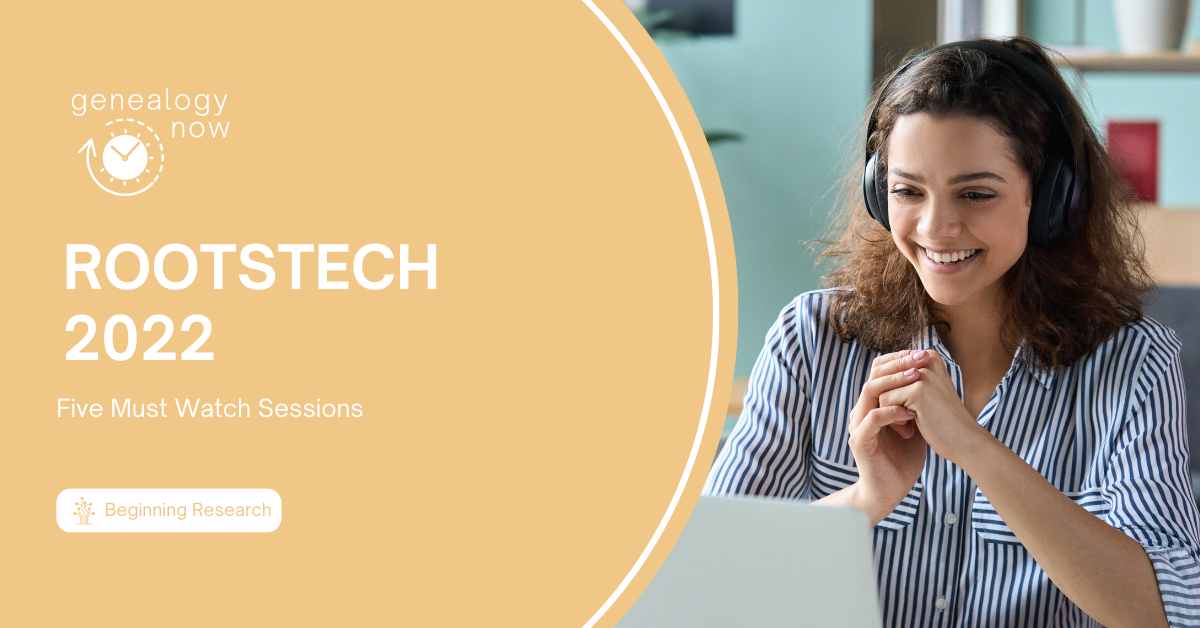
RootsTech took place virtually on March 3-5, 2022, but did you know that that weekend was simply the “launch” of a full year of RootsTech? All sessions created for this conference, along with a majority of those created for RootsTech Connect 2021 will be available on the RootsTech website for a full year. This is exciting news for those of us who simply didn’t have enough time to watch all the sessions we wanted to watch during the three-day launch.
Have you considered making RootsTech a part of your genealogy education plan for the next year? It is easy to add sessions to your playlist and watch them one by one throughout the year as you have time. With most videos being just 5-20 minutes long, it’s easy to fit one in almost any time!
Here are five sessions that I have enjoyed so far and that I am excited to recommend:
- Diahan Southard’s 3-part series, “What to Do With Your DNA Results in 2022” is a great introduction that will help those who haven’t really figured out how to use their DNA tests for genealogy learn to navigate the DNA testing companies’ websites, organize matches into networks of people who all descend from a common ancestor, and use DNA to answer research questions.
- Diana Elder’s presentation titled “Jurisdictions Explained: Finding New Avenues of Research for Your Family” will help you understand how knowing who created the records for your ancestor will help you locate their records. This is a fantastic session for anyone who doesn’t know where to turn next in their research.
- I was fascinated by Richard K. Miller’s quick tips on “Subway Maps” and “Swim Lanes.” Watch these to learn some simple strategies for analyzing the records attached to your ancestors’ profiles at FamilySearch.
- Kimball Carter has a great series titled “A Comprehensive Guide to Finding Your Immigrant Ancestor’s Hometown.” When trying to find immigrant ancestors in their place of origin, this is a necessary step and Kimball walks you through the places you might be able to find that often elusive information.
- Because a lot of my research centers in New York, I was interested in Josh Taylor’s presentation, “Tracing Migrations from New York 1780 to 1880.” I was not disappointed! Josh provided insightful information about why our ancestors might have migrated and what the migration process would have entailed. He then shared links to several free resources that can help genealogists trace their ancestors’ migrations – resources that were new to me, so I’m really excited to explore them and add them to my New York locality guide!
I’m interested in learning what sessions you have watched and found valuable. With so many to choose from, it’s nice to get recommendations! Share your favorites in the comment below.

Thanks for this shout-out, Alice! I’ve also bookmarked your other recommendations to watch them sometime.